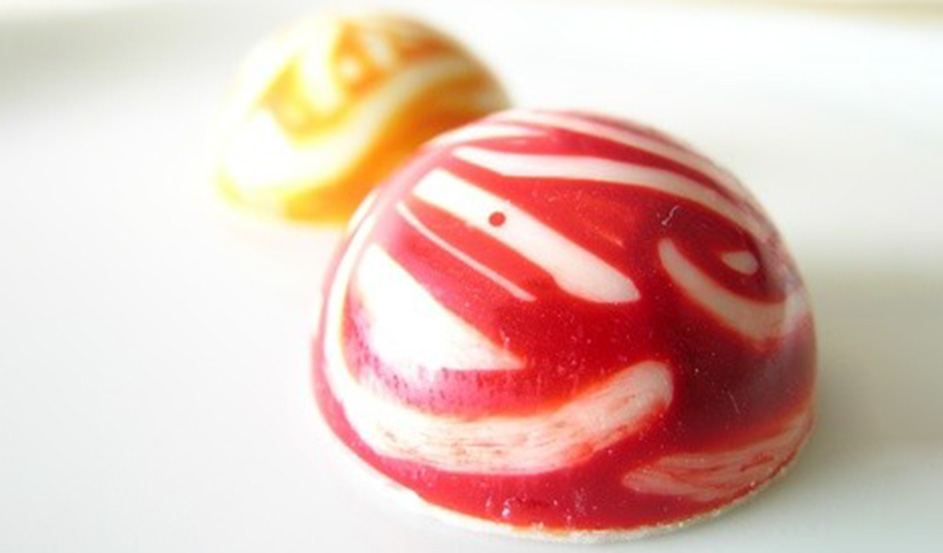
HYDROCOLLOID BASICS
A colloid is a substance microscopically dispersed evenly throughout another substance. A colloidal system consists of two separate phases: a dispersed phase (or internal phase) and a continuous phase (or dispersion medium). A colloidal system may be solid, liquid, or gaseous.
A hydrocolloid is defined as a colloid system wherein the colloid particles are dispersed in water. A hydrocolloid has colloid particles spread throughout water, and depending on the quantity of water available that can take place in different states, e.g., gel or sol (liquid). Hydrocolloids can be either irreversible (single-state) or reversible.
Hydrocolloids often called gums, are hydrophilic polymers, of vegetable, animal, microbial or synthetic origin, that generally contain many hydroxyl groups and may be polyelectrolytes. They are naturally present or added to control the functional properties of aqueous foodstuffs. Most important amongst these properties are viscosity (including thickening and gelling) and water binding but also significant are many others including emulsion stabilization, prevention of ice recrystallization and organoleptic properties. The degree with which the hydrocolloid solutions mix with saliva, determined by their degree of chain entanglement, determines flavor perception.
Many hydrocolloids can change their physical behavior and characteristics with the addition or elimination of heat. They have the ability to thicken and form gels at very low concentrations. Some can be used as whipping agents to make foams, and some act as emulsifiers. With the exception of gelatin (which is a protein), all hydrocolloids are polysaccharides, or complex sugars.
When a hydrocolloid is dissolved in water, the water gathers around and is attracted to the sugar units, forming a layer of water with restricted movement. It is this ability to organize and control water that gives hydrocolloids their ability to thicken and gel. The properties of any particular hydrocolloid stem from its physical structure or shape (determined by the sugars it is made from), and its chemical properties: its size, its charge, and the distribution and composition of different side chains along the main sugar chain.
Hydrocolloids are classified as either thickening or gelling agents.
Many hydrocolloids are derived from natural sources, such as seaweed, seeds, roots, tree sap, fruit peels, etc. Many cultures have employed some of these naturally-derived hydrocolloids for thousands of years. Agar, for example, comes from seaweed, and is a traditional ingredient in Asia. Carrageenan, known as Irish moss, has been used in traditional Irish cooking for centuries. Gum arabic (tree sap), locust bean gum (seeds of the carob tree), and gelatin have also been used for thousands of years. Pectin, naturally occurring in fruits, has always been used to make jellies and jams. Gelatin is produced by hydrolysis of proteins of bovine and fish origins, and pectin is extracted from citrus peel and apple pomace.
Some modern but still all-natural hydrocolloids, such as xanthan and gellan, are produced by bacteria. Other hydrocolloids are produced by modifying natural ingredients to create new compounds not found in nature. The most important of these are the cellulose-derived hydrocolloids: methylcellulose, hydroxypropylmethylcellulose, etc. These modified products, while not “all natural,” are still safe.
Important characteristics of gels are:
- Thermo-reversible/Irreversible: Thermo-reversible gels melt when heated to a high enough temperature (with the exception of methylcellulose, which forms thermo-reversible gels that set when heated and melt when cooled). Thermo-irreversible gels will not melt when heated. Some gels are thermally reversible, but the melting temperature is so high that they don’t melt in practice (high-acyl gellan).
- Tendency for Syneresis: Syneresis occurs when liquid weeps out of a gel over time, as happens in custards. Agar is prone to syneresis; water can be expelled merely by pressing on it. Some gels only experience syneresis after long periods of time. Many gels that are ruined by freezing (see freeze-thaw stability, below) tend to weep when thawed. Within a given hydrocolloid system, harder gels tend to weep more than softer ones.
- Freeze-thaw stability: Gels that may be frozen and thawed repeatedly are called freeze-thaw stable. Many gels begin to degrade after freezing; only one freeze-thaw cycle is advised. When an unstable gel is frozen and later thawed, its texture and structural may be compromised by the physical changes. To offset this effect and promote freeze-thaw stability, a second thickening hydrocolloid may be added to the gel system.
- Clarity: The addition of some hydrocolloids yield gels that are more transparent than others.
- Flavor release: Flavor release describes how well a gel expresses the flavorings with which it has been made. Flavor release is determined by many gel texture properties. Gelatin, for example, is considered to have excellent flavor release mainly because it melts in the mouth, whereas alginate is said to have poor flavor release because it tends to lock up flavors.
- Shear reversibility: Shear is a force in which parallel objects move in opposite directions in a “sliding” motion, such as in the action of scissors cutting or a razor shaving. Stirring produces a shear, as does blending. Very fast blenders are called high-shear blenders. A shear-reversible gel will reform after it has been broken by a shear force. Most gels are not shear reversible.
- Gel Flow Properties: Hydrocolloids that thicken are judged by the flow properties they produce:
- Shear thinning: Water has the same viscosity no matter how fast or how hard it is stirred. Liquids that display this characteristic are called Newtonian fluids. Most hydrocolloids, however, display non-Newtonian behavior and tend to get thinner as they are sheared (known as pseudo-plastic behavior). Large tangled hydrocolloid molecules that are aligned randomly in solution tend to be thick. As shear is applied to the solution and the molecules start to move, they tend to align themselves in planes, causing them to grow thinner the more vigorously they are stirred.
- Yield point: Some hydrocolloids act like a gel when standing still and liquify instantly under shear. Hydrocolloids with yield points, such as xanthan gum, are useful as stabilizers in foods like salad dressing. The dressing acts like a gel when it’s sitting on the table: the oil droplets stay dispersed in the bottle. But when the dressing is poured, it flows like a liquid. A related term sometimes used synonymously with yield point is thixotropic. Thixotropic fluids, such as ketchup, act as a solid until they are sheared with sufficient force for sufficient time.
- Fluid gels: Hydrocolloids can also form fluid gels. Fluid gels have the properties of both a fluid and a gel. Agar fluid gels can look like hair gel on the plate but feel like a smooth, creamy sauce in the mouth. Gellan can make a fluid gel that diners will experience like a soup but that will suspend large particles as if it were solid.
Considerations when using Hydrocolloids:
Forming Gels
It is extremely important to understand when and why a hydrocolloid gels since this behavior typically determines which hydrocolloid is appropriate to use.
Heating and Cooling
Many hydrocolloids gel when cooled. Sometimes these gels can be melted again, such as gelatin, and sometimes they cannot, such as the pectin in a jam. Methylcellulose forms a gel when heated that melts on cooling. Some thermally reversible gels show temperature hysteresis, that is, the setting temperature of the gel is lower than the temperature needed to melt the gel. This property can be very important to a chef. For example, agar sets around 35°C but melts at around 90°C. The low set temperature makes agar easy to work with, and the high melt temperature allows agar preparations to be served hot. Thermally formed gels can also be slow set or snap set. Snap setting hydrocolloids, like gellan, gel instantly below their gelation temperature.
Calcium and Potassium
Some hydrocolloids form gels in the presence of positively charged ions, mainly calcium and potassium. In these instances, the positive ion fits into negatively charged areas in the hydrocolloid, allowing two hydrocolloid molecules to stick together in a structure similar to an egg-crate. In some cases, like alginates, these gels are not reversible; in others, like kappa carrageenan, thermo-reversible gels are formed. It is extremely important to control the amount of calcium in solution when dealing with calcium-dependent hydrocolloids. If too much calcium is present, the hydrocolloid will gel immediately, a process that is called pre-gelation.
Sometimes, the hydrocolloid simply will not hydrate in a recipe. In these cases, chemicals called sequestrants are added to these solutions to prevent pre-gelation and allow proper hydration. Sequestrants have the ability to bind with ions like calcium more effectively than hydrocolloids can. In many cases, the amount of calcium in tap water alone can cause pre-gelation of a hydrocolloid if not treated with sequestrants. Acidic solutions (low pH) also need more sequestrants than neutral solutions because many calcium impurities are more soluble and affect hydrocolloids more at low pH (see section on calcium salts and sequestrants).
Synergy, 1+1=3
Hydrocolloids do not act like most ingredients. In general, do not expect to be able to mix two hydrocolloids without changing their properties. When two liquids of the same viscosity made with different hydrocolloids are mixed, the viscosity often does not stay the same, but increases. The hydrocolloids have a synergistic increase in viscosity. This effect is used by manufacturers to save money, because they can use a smaller quantity of hydrocolloid in a synergistic system. Another example of synergy is when xanthan gum and locust bean gum, normally non-gelling thickeners, are mixed. Surprisingly, they form a gel. This is called synergistic gelation. Sometimes, hydrocolloids will show synergism with a particular non-hydrocolloid ingredient. For instance, carrageenan plus milk gels at half the concentration of carrageenan plus water.
As a rule of thumb, gelling hydrocolloids and thickening hydrocolloids can often be mixed to get the benefits of both (locust bean gum can be added to kappa carrageenan to give it a better texture, for example) without synergistic effects that will damage a recipe. Charged and uncharged hydrocolloids can also often be mixed without incident, like methylcellulose and alginate
Hydration
For a hydrocolloid to work properly, it must be hydrated and dissolved in solution. When a recipe fails, the problem is frequently improper hydration. Hydration procedures vary from hydrocolloid to hydrocolloid, but there are some important general rules. Hydrocolloids added to water tend to swell as they unfold into solution. The swelling causes particles to clump together forming lumps that are very difficult to dissolve. This phenomenon is familiar to chefs who use starch as a thickener (lumps in the gravy). Many hydrocolloids are even more lump-forming than starch. The trick to hydrating hydrocolloids is to get good dispersion –keep the hydrocolloid particles separated before they start to swell, hydrate, and cause lumps. Industrially, hydrocolloids are often mixed with a non-solvent, like alcohol or corn syrup, or an easily dissolved powder like sugar. This pre-mix helps the hydrocolloid particles get away from each other while they hydrate.
In general, hydrocolloids like to be hydrated in pure water. Large concentrations of sugar, salt, starch, alcohol, or anything that competes with the hydrocolloid for water can hinder hydration. Sometimes a hydrocolloid will not hydrate in a recipe. Alginates, for instance, will not hydrate in acidic liquids. In these cases, the hydrocolloid can be pre-hydrated in pure water, and the resulting solution can usually be added to the recipe without a problem. It is a good practice to add hydrocolloid as early in a recipe as possible.
Recipe Formulations and Measuring
Hydrocolloids are usually specified in percent by weight. One kilogram of 2% alginate solution contains 980 g of water and 20 g of alginate. However, to make a 2% alginate solution, most chefs will add 20 g of alginate to 1000 g of water. Although this mix is technically incorrect (this is a 1.96% solution), the effect of the small additional hydrocolloid is negligible, and this method is easier to calculate. To get consistent results, it is important to use the same method every time. Most hydrocolloid work requires accurate measurement. A scale accurate to 0.1 g is essential; in some cases, it is helpful to have a scale accurate to .01 g.
Calcium Salts and Sequestrants
Calcium sequestrants (chemicals that bind calcium ions) are difficult to understand. The two sequestrants most used by chefs are sodium citrate and sodium hexametaphosphate (SHMP). Sodium citrate only works in systems above a pH of 4, while SHMP works in all the pH ranges a chef will ever use. For most applications, SHMP at 0.1% will provide good sequestering ability.
Different recipes specify the use of different calcium salts. The three most common are calcium chloride, calcium lactate, and calcium lactate gluconate. Calcium chloride is 36% calcium, is inexpensive, and is very soluble in water, but has a terrible taste. Calcium lactate is 13% calcium, is more expensive, and is not nearly as soluble as calcium chloride, but it tastes much better. Calcium lactate gluconate, or calcium gluconate, is only 9% calcium, is much more expensive than the others, and is not very soluble—it needs to be dissolved in hot water, but is flavorless. In recipes, calcium chloride baths are usually between 0.8 – 1.5%. Calcium lactate and calcium gluconate are usually used in quantities between 2–5%.
Dispersion & Dissolution
Hydrocolloids that form gels are easily dispersed when conditions are favorable for gelling. Dispersion (getting hydrocolloid particles as far away from each other as possible before they start to absorb water and swell) is simple to do when a hydrocolloid is added to water in a state favoring gelling because they are not soluble in that state.
Dissolution cannot happen when conditions are favorable for gelling. Gelatin cannot be dissolved in cold water. Kappa carrageenan cannot be dissolved in potassium-filled cold water. Hydrocolloid recipes often call for the addition of a hydrocolloid in conditions that favor gelling, to allow dispersion, and then specify putting the hydrocolloid in a condition that doesn’t favor gelling, to allow dissolution and hydration.
Hydration tip
A chef’s best friend in hydration is the blender, and it’s worth it to get a good one. Blenders use high shear to beat particles away form each other and achieve good dispersion throughout a mixture.
Here’s a good technique: Add liquid to the blender, then select a speed that forms a vortex in the liquid without a lot of splashing. Slowly sprinkle the hydrocolloid in the center of the vortex until it is thoroughly dispersed. Continue blending on high until the mixture is hydrated.
Common Hydrocolloids: Corn flour, Gelatin, Carrageenan, Agar, Sodium Alginate, Locust Bean Gum, Gum Arabic, Pectin, Xanthan Gum, Gellan, Lecithin, Maltodextrin, Methylcellulose
More resources
Online articles and downloads:
Original article is available at Cooking Issues
Free dowload PDF of hydrocolloid recipes Khymos
Water structure and science information
PDF download Efficient Rheology Control Additives
PDF download Hydrocolloid Properties
Who produces hydrocolloids?
Texturas (Spanish)
Biozoon (German)
SOSA (Spanish)
Molecule R (Canada)
Where can you buy hydrocolloids online?
Cream Supplies (UK + EU), Infusions for Chefs (UK),
Cream Supplies (International), Molecule R (International)
Cuisine Innovation (Fra), Bien Manger (Fra), Kalys (Fra)
Koerner (USA) Amazon (USA), Cullinary Imports (USA)

